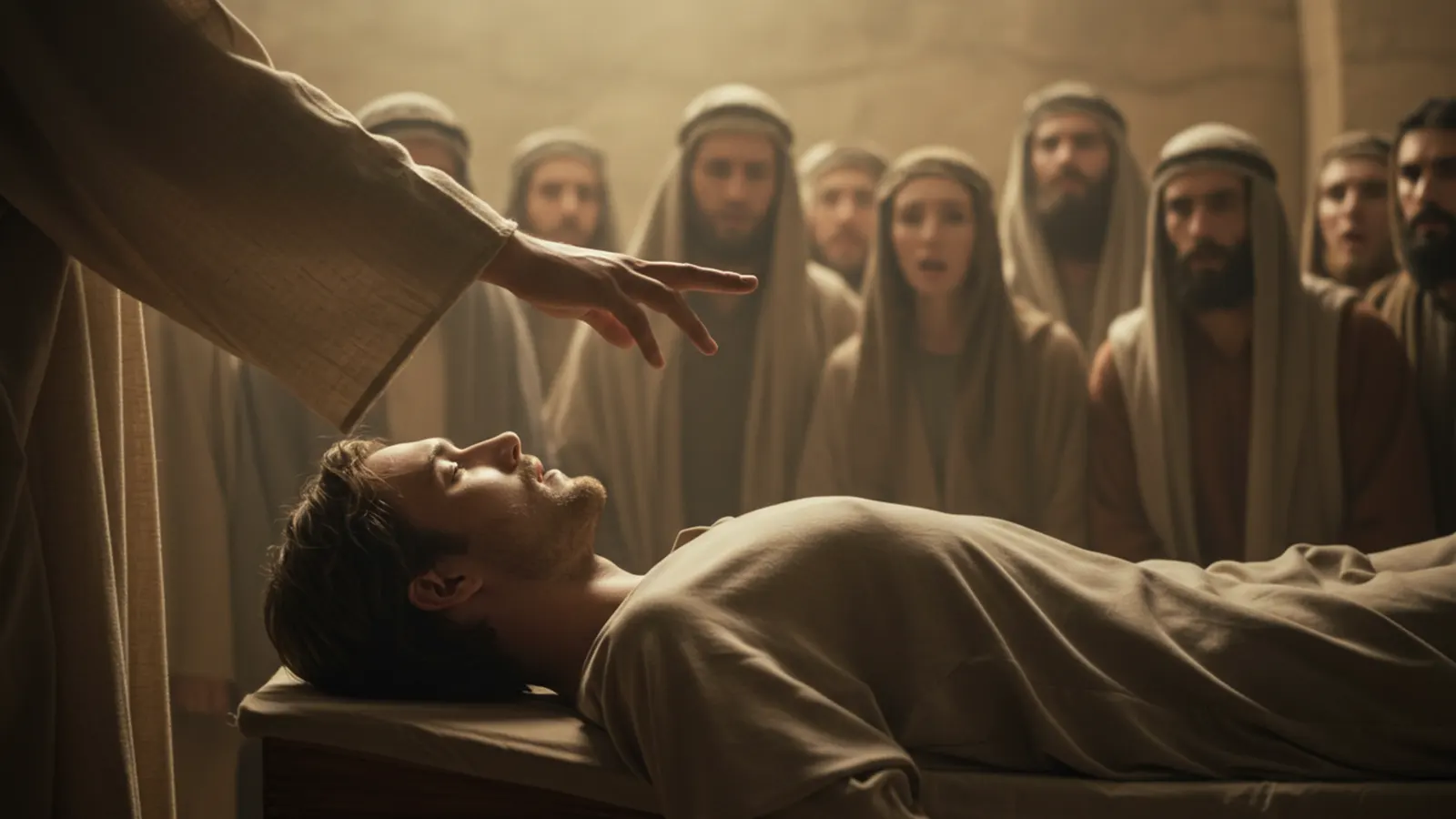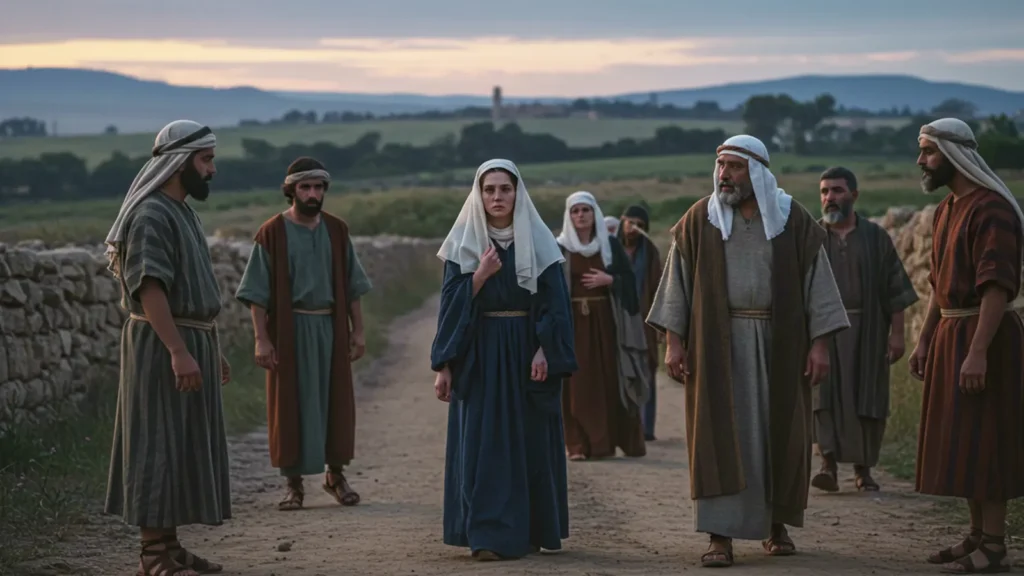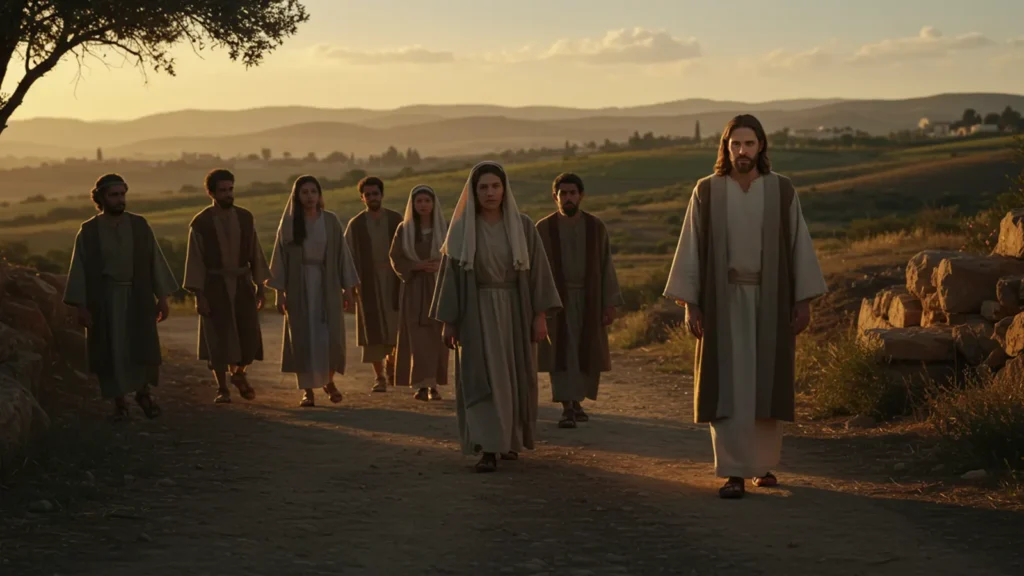The story of the widow of Nain is one of the most moving accounts in the Gospel. It shows how Jesus cares about human pain and how divine power can turn despair into hope. More than a simple miracle report, it is a lesson in faith, compassion, and restoration.
The widow of Nain appears in Luke 7:11–17, and her encounter with Jesus reveals the tender heart of the Son of God. He not only raised a young man from the dead but also restored meaning to the life of a mother who had lost everything.
Index – Straight to the Point
Table of Contents
Quick Summary
The story of the widow of Nain is a portrait of Jesus’ compassion and power in action. When He encountered a mother weeping over her only son’s death, He was moved with mercy and performed a miracle that restored life, faith, and hope.
This episode teaches us that God sees silent pain and turns the impossible into reality. The widow of Nain symbolizes everyone who thinks they have lost everything but is surprised by the restoring presence of Christ.
Main lessons from the episode:
- Jesus sees human suffering even before we ask for help.
- Divine compassion is active: God doesn’t just feel; He acts.
- Nothing is truly lost when Christ is present.
- Faith is born from encountering God’s love.
- Jesus’ presence changes any story.
The central message is simple and eternal: where Jesus arrives, death gives way to life and mourning turns into joy.
Context of the Widow of Nain Story
The widow of Nain lived in a small town in Galilee. Widowed and without support, she depended on her only son — who had also died. At that time, this meant being left without provision, without protection, and without hope.
As the funeral procession left the city, Jesus approached with a crowd. Two processions met: one headed toward death, with tears and mourning; the other brought life, with the Savior at the front. That meeting would change everything.
The Encounter Between Jesus and the Widow of Nain
The scene is deeply moving. The widow of Nain wept, surrounded by people who mourned with her. When Jesus saw her, His heart was filled with compassion.
The biblical text says:
“When the Lord saw her, He had compassion on her and said to her, ‘Do not weep.’” (Luke 7:13)
Jesus came near, touched the bier, and commanded:
“Young man, I say to you, arise.”
At once, the young man sat up and began to speak. The crowd was amazed, and Jesus gave him back to his mother — a gesture of tenderness and divine power.
The Power of Jesus’ Compassion
The widow of Nain did not ask for help. She didn’t cry out, make a vow, or beg. Even so, Jesus acted out of love. He saw her silent pain and moved to restore her life.
This episode reveals something essential about Christ’s character:
- He sees suffering before we ask for help.
- His compassion is active — it turns pain into comfort.
- His power doesn’t depend on rituals but on His presence.
The widow of Nain teaches us that God’s gaze reaches even the most hidden tears.

The Spiritual Meaning of the Widow of Nain
The miracle of the widow of Nain goes beyond physical resurrection. It represents the restoration of everything that seems lost.
Just as the young man returned to life, Jesus can resurrect dormant dreams, weakened faith, forgotten purposes, and destroyed hope.
The story of the widow of Nain portrays divine action: where He arrives, death gives way to life and weeping turns into joy.
The Meaning of the Name “Nain”
The name Nain means “pleasant” or “delightful” in Hebrew. It is symbolic that the miracle happened in a place with this name, for it shows that God can turn even pain into something beautiful.
The town of Nain came to represent spiritual renewal, restored hope, and joy that overcomes despair.
In other words, where Jesus arrives, life begins to bloom again.
Lessons We Learn from the Widow of Nain
The story of the widow teaches precious lessons that remain true today.
- Jesus sees beyond appearances. He sees the heart and the tears no one else notices.
- Christ’s compassion starts every miracle. He acts not out of obligation but out of love.
- Nothing is truly lost. Even when all seems over, God has the power to reverse it.
- Faith is born from encountering divine love. When Jesus touches, life is transformed.
- Our testimony inspires others. Just as the people glorified God in Nain, our story can rekindle many people’s faith.
These truths make the widow of Nain a symbol of divine restoration.
The Presence That Transforms
What changes everything is not only the miracle but the presence of Jesus. He needed no rituals or complex words — it was enough for Him to be there.
The widow of Nain shows that the Master’s touch is enough to bring life back to what was dead. The power is in His presence, not in performance.
When Jesus enters our stories, tears find comfort, emptiness finds meaning, and death is overcome by life.

The Silent Faith of the Widow of Nain
There is something profound in the silence of the widow of Nain. She said nothing, but her pain was enough to move Jesus’ heart. This shows that God understands what the heart cannot express, He hears even silence, and He accepts tears as a form of prayer.
Often, the most powerful cry is the one only heaven hears.
The Testimony That Touched a City
After the miracle, everyone who witnessed it glorified God, saying:
“A great prophet has arisen among us,” and “God has visited His people.” (Luke 7:16)
The widow of Nain became a living witness of God’s power. Her miracle inspired faith, awakened praise, and showed that Jesus’ visitation transforms multitudes.
Practical Applications of the Widow of Nain Story
The story of the widow of Nain is not just a distant memory — it mirrors the lives of many. It invites us to apply its lessons daily.
- When pain feels unbearable, remember: Jesus sees you.
- When something seems lost, He can restore it.
- When the future seems colorless, His touch brings new light.
- When silence is your only prayer, trust — God understands.
The same Jesus who comforted the widow of Nain still walks beside us, ready to turn mourning into joy.
A Miracle That Never Ages
The story of the widow of Nain spans the centuries as a symbol of hope. It shows that God’s love has no expiration date. The power that raised that woman’s son still works today, restoring lives, healing hearts, and rekindling faith.
The message is clear: as long as Jesus is present, there will always be hope.

People also ask
What does the story of the widow of Nain teach us?
The story of the widow of Nain teaches us about Jesus’ compassion and the power of hope. It shows that God cares about human suffering and that nothing is lost when Christ enters our story. Even without asking, the woman was reached by divine mercy, proving that God’s love is free and restorative.
Who was the widow of Nain in the Holy Bible?
The widow of Nain was a woman from the town of Nain in Galilee, mentioned in Luke 7:11–17. She had lost her husband and then her only son, becoming a symbol of sorrow and helplessness. When Jesus saw her weeping, He had compassion and performed the miracle of raising the young man.
What caused the death of the widow of Nain’s son?
The Bible does not reveal the cause of the widow of Nain’s son’s death. The focus of the passage is not on the reason for the loss but on the manifestation of Jesus’ power and compassion. The text emphasizes that, regardless of the cause, Christ has authority over death and can turn any tragedy into testimony.
How old was the widow of Nain’s son?
The Gospel also does not mention the young man’s age. However, the Greek term used (“neaniskos”) indicates that he was a young man, possibly in late adolescence or early adulthood. This reinforces the impact of the miracle, as it represented not only a restored life but also a future that had been cut short.
Conclusion:
The story of the widow of Nain is an eternal reminder that Jesus is the same — compassionate, loving, and ready to restore what was lost. He sees what no one sees, understands what no one hears, and acts when everything seems finished.
Just as He gave that mother her son back, He can also give life, faith, and joy back to our hearts. The message that echoes from Nain is simple and powerful: when Jesus visits the path of pain, the miracle happens.
READ ALSO:
- The Importance of Gratitude to God for Everything 2025
- Deuteronomy 11:24: Understand the Meaning and Lessons
- Exodus 3: Moses’ Encounter with God – Explained
FOLLOW US ON FACEBOOK
I hope you enjoyed it.
Leave your message of faith below!